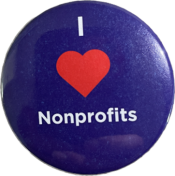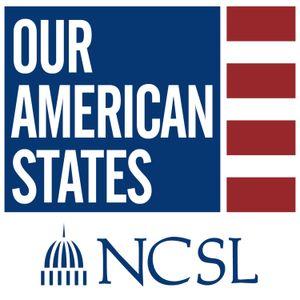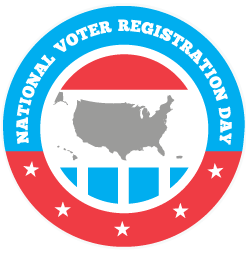The Foreseeable, Yet Avoidable Crisis
Over the next five weeks, Congress will either get its fiscal act together by passing 12 appropriations bills before the new fiscal year begins on October 1, overtly postpone making tough decisions by passing a stopgap spending bill, or lead the country into another painful federal government shutdown. It was only last June that some of the same threats were front and center, but cooler heads prevailed and Congress enacted and the President signed the Fiscal Responsibility Act that averted a debt-limit crisis. That law set spending levels for the next fiscal year. So far, congressional committees have largely ignored those levels, with Senate appropriators proposing an extra $13 billion in spending and the House Appropriations Committee attempting to cut spending by more than $100 billion from what was approved. The House bills, none of which has been adopted by the full Appropriations Committee, include numerous “poison pill” provisions – such as curbing racial equity and LGBTQIA+ programs and rights, restricting abortions further, and blocking environmental and election reform activities – that no one expects the Senate or White House to go along with.
Timing is short for any kind of breakthrough. Prior to the end of the current fiscal year on September 30, the Senate will only be in session for 17 days; the House doesn’t return from the August recess until September 12 and will meet for only 12 days. In normal times, the House and Senate would agree to a Continuing Resolution, commonly called a “CR,” that maintains spending levels for several weeks or months, typically until some point in December. This year, members of the conservative House Freedom Caucus have said they will not support a CR of more than a few days unless the House secures significant policy gains, such as spending cuts or some of the controversial policy riders. The worst-case scenario – shutdown of the federal government – would be particularly damaging to charitable nonprofits and the people they serve, as government programs would grind to a halt, individuals in crises would turn in even greater numbers to charitable organizations, and payments and renewals for government grants and contracts would cease.
Committee Investigates Efforts to Politicize Nonprofits
Last week, Republican leaders of the House tax committee published a “request for information” about “political campaign intervention” by 501(c)(3) charitable nonprofits and 501(c)(4) social welfare organizations. The letter, sent by House Ways and Means Committee Chair Smith (R-MO) and Oversight Subcommittee Chair Schweikert (R-AZ), alleges progressive groups take advantage of perceived loopholes and the lack of both law enforcement and transparency for donations to funnel billions of dollars into election activities that favor Democrats and oppose Republican candidates. Longstanding federal law (known as the Johnson Amendment) provides that in exchange for tax-exempt status, a charitable nonprofit, foundation, or religious organization may “not participate in, or intervene in (including the publishing or distributing of statements), any political campaign on behalf of (or in opposition to) any candidate for public office.”
Relying on allegations raised in a report of a conservative think tank, they call out Democratic and progressive “dark money” interests in all of their examples. The Ways and Means Committee letter asks the public to provide answers and evidence related to 10 questions. These range from questioning the definition of “political campaign intervention” and asking for evidence of groups violating the law on nonpartisanship, to improving how “contributions” are reported on the IRS Form 990, plus numerous questions about foreign money going into charitable, social welfare, and truly political organizations. Comments are due to the Committee by Monday, September 4.
Worth Quoting
- A charitable nonprofit may “not participate in, or intervene in (including the publishing or distributing of statements), any political campaign on behalf of (or in opposition to) any candidate for public office."
~ The third proviso in Section 501(c)(3) of the Internal Revenue Code, 26 U.S.C. Sec. 501(c)(3). Learn more about ongoing efforts to Protect the Johnson Amendment and Nonprofit Nonpartisanship.
- “The National Council of Nonprofits is committed to preserving the tax-exempt status of organizations contributing to the well-being of their communities and strengthening and expanding incentives for individuals to give their time and money to the organizations whose missions they support. In practice, this commitment means … [s]upporting and preserving the longstanding federal policy limiting the ability to receive tax-deductible charitable donations only to tax-exempt organizations that refrain from participating in or intervening in any political campaign on behalf of or in opposition to any candidate for public office.”
~ Public Policy Agenda, 2023, National Council of Nonprofits.
Federal FastView
- Evaluating Nonprofit Hospitals: This month, a bipartisan group of four Senators sent a letter to the Internal Revenue Service calling for a review of nonprofit hospital disclosure rules on “community benefits” and requesting responses to eight questions included in the letter. The letter cites coverage around medical debt and expresses doubts whether nonprofit hospitals are meeting tax-exempt requirements. Among other things, the Senators seek information on the challenges the IRS faces in overseeing tax-exempt hospitals and ask for a list of the “most commonly reported community benefit activities that qualified a nonprofit hospital for tax exemptions.” Since 2009, charitable nonprofit hospitals have been required to disclose the “community benefit” they provide to the public in exchange for tax-exempt status.
- Celebrating Nonprofit Energy Efficiency Incentives: Last week marked the one-year anniversary of the Inflation Reduction Act, the landmark law that, among other things, included nonprofit access to tax credits to promote energy-efficiency improvements. The law extends many tax credits – normally reserved for for-profit businesses that pay income taxes – to charitable nonprofits and governments through elective pay (sometimes called “direct pay”) and transferability options. The Energy Department has also established the Renew America's Nonprofits program to enhance the technical and administrative capacity of nonprofits seeking access to this funding.
Worth Reading
On the Inflation Reduction Act
- Democrats’ climate law set off a wave of energy projects in GOP districts. A backlash followed., Josh Siegel, Kelsey Tamborrino, and Jessie Blaeser, Politico, Aug. 13, 2023.
- U.S. Department of the Treasury, IRS Release Guidance on Provisions to Expand Reach of Clean Energy Tax Credits Through President Biden’s Investing in America Agenda, U.S. Treasury Department press release, June 14, 2023.
On child care funding cliff
- Bridging the Child-Care Funding Cliff, Tim Bartik and Kathleen Bolter, Governing, Aug. 21, 2023.
On the end of pandemic relief
- The $5 trillion pandemic safety net changed lives. Now it’s over, Kyle Swenson, The Washington Post, Aug. 7, 2023.
Gauging the Scope of Nonprofit Workforce Shortages
Charitable nonprofits continue to report the impact of workforce shortages on their missions, propose solutions, and highlight developments in other sectors that may be replicated. Findings from a survey conducted by the Minnesota Council of Nonprofits show that 40% of nonprofits in the state are struggling to recruit employees, and they have “nearly 3% fewer employees than in 2019.” On the survey results, the state association of nonprofits’ Executive Director Nonoko Sato concluded, “This is just going to force us to be creative in terms of how we continue to provide our services,” adding that “It just takes longer for nonprofits to recover.” This month, Momentum Nonprofit Partners in Tennessee, in partnership with the University of Memphis Institute for Philanthropy and Nonprofit Leadership, released the latest State of the Mid-South Nonprofit Sector Report which demonstrates the nationwide trend of nonprofits’ growing challenges. The report found that more than 50% of nonprofit CEOs and executive directors reported their “intention to leave their positions within the next 3-5 years.” The report also shows an increase in program and service demand, and funding limitations and staffing challenges, all of which affect nonprofits’ operations and ability to carry out their missions.
Local Governments Innovating to Overcome Shortages
Like charitable nonprofits, local governments are struggling to fill job vacancies while developing benefits programs to retain staff. To help alleviate teacher shortages, Philadelphia, Pennsylvania, has been working with the nonprofit Breakthrough Greater Philadelphia to implement a summer program that trains college students to become teaching fellows. This year, three-fourths of participants have become teachers, and 2023 had the largest cohort with over 30 teaching fellows and 180 students. High turnover in state and local governments can be a serious challenge, leading many counties to pay out raises and one-time bonuses. Hardy County, West Virginia, implemented a longevity bonus for every year workers stay in their jobs. In Winnebago County, Wisconsin, there is now a policy to allow a transfer of benefit levels for recruits with more experience from other counties. Building a pipeline to public service is also important to counties, according to the National Association of Counties CEO/Executive Director Matthew D. Chase: “You’re seeing counties really innovate with how they focus on their ‘why’ — what is the purpose of public service.… We’re starting to see some traction and really getting good, young, smart people in public service.”
Worth Reading
- How to Develop and Write a Grant Proposal, Congressional Research Service, updated Aug. 10, 2023, providing a guide intended to help Members and congressional staff assist constituents in their districts/states.
In Focus
National Nonprofit Legislative Caucus

Nonprofits play vital roles in communities yet are too often overlooked in legislation and policymaking. The National Nonprofit Legislative Caucus is an open, bipartisan, and bicameral group of state legislators dedicated to overcome that oversight by supporting the work of charitable nonprofits and the people they serve. The Caucus was created in partnership with Maryland State Senator Cheryl Kagan and the National Council of Nonprofits to convene state legislators from across the country to identify legislative solutions to challenges charitable nonprofits face in working to advance their missions, such as government grants and contract reform, starting state nonprofit caucuses, increasing audit thresholds, including nonprofits in small business legislation, and keeping nonprofits independent from state governments. The Caucus enables lawmakers to share positive legislative ideas to benefit nonprofit organizations in their respective states. If you are a state legislator or know of one who should join, contact Tiffany Gourley Carter for more information.
Worth Reading
On ending the housing crisis
- Governments have faith that church property can help solve the housing crisis, Molly Bolan, Route Fifty, Aug. 16, 2023.
- How the private sector can ease housing crisis, Gabriela Coletta, David Grossman, and Jacob Grossman, Boston Globe, Aug. 14, 2023.
On ending poverty
- How Much Would Poverty Decrease in Each State If Every Eligible Person Received Safety Net Benefits?, Urban Institute, August 2023.
Worth Rereading
- Commentary: Taking Note of Bipartisanship, Nonprofit Champion, Aug. 7, 2023.
NCSL Podcast
Charitable Nonprofits Working With States

OAS Episode 192 | NCSL Podcasts
Recognizing the substantial impact of the charitable nonprofit sector on the economy, the National Conference of State Legislatures podcaster Ed Smith sat down with David L. Thompson of the National Council of Nonprofits to better understand how charitable nonprofits work with legislatures and the states. Thompson explained the roles charitable nonprofits play in communities and how state government and nonprofits work together to address any number of challenges, and specifically the value of community-based organizations when it comes to helping government implement programs. He also noted a challenge that charitable nonprofits have in common with state government — a shortage of workers — and ways government and the nonprofit sector can advance policies to try to address those shortages.
Numbers in the News
$3.3 trillion
The projected cost over 10 years ($3.8 trillion with interest) that would be added to the federal debt if Congress were to extend all of the provisions of the 2017 tax law (“Tax Cuts and Jobs Act”). The estimate indicates that the bulk of the cost of an extension would come from the 2017 law’s individual income and estate tax provisions.
Source: Tax Cut Extensions Cost Over $3.3 Trillion, Committee for a Responsible Federal Budget, Aug. 14, 2023.
$1.26 trillion
The projected Fiscal Year 2024 general fund for all 50 states, the District of Columbia, Guam, Puerto Rico, and the U.S. Virgin Islands.
Source: The Fiscal Survey of States: Spring 2023, National Association of State Budget Officers, accessed Aug. 14, 2023.
Nonprofit Events
- Aug. 23, Policy Advocacy for Nonprofit Leaders (A Primer), Center for Nonprofit Excellence
- Aug. 24, Nonprofit+Grantmaker Conference, Alliance of Arizona Nonprofits & Arizona Grantmakers Forum
- Aug. 29-30, Idaho Nonprofit Conference, Idaho Nonprofit Center
- Sep. 14, UNA Annual Conference, Utah Nonprofits Conference
- Sept. 19, Nonprofit Leadership Summit, West Virginia Nonprofit Association
- Sept. 19-21, MNA Annual Conference, Montana Nonprofit Association
- Sept. 19-20, 2023 Collaborative Conference – In Person, Pennsylvania Association of Nonprofit Organizations
- Sept. 20-21, 2023 MCN Annual Conference, Minnesota Council of Nonprofits
- Sep. 24, Conference for Louisiana’s Nonprofits, Louisiana Alliance for Nonprofits
- Sep. 28, Advocacy Summit, Oklahoma Center for Nonprofits
- Sept. 29, Nonprofits Count Conference, Florida Nonprofit Alliance
National Voter Registration Day is September 19!
Less than One Month Until National Voter Registration Day!

The nation’s biggest nonpartisan civic holiday – National Voter Registration Day – is on September 19. Join nonprofits and other organizations for a one-day, nationwide blitz to raise awareness of nonpartisan voter registration opportunities and ensure every eligible person is #VoteReady.
Using the Powers You Have Series
The Power of Follow Through
In the Advocacy in Action article, The Power of Perseverance, we shared the nonprofit advocacy twist to an old adage: if at first you don’t succeed, adjust your advocacy strategy and try, try, and keep trying until you achieve your policy goal. That article demonstrated the super power of nonprofit perseverance that every charitable nonprofit professional can and should deploy on behalf of their missions. Now, here’s another super power: follow through, the younger sibling of perseverance.
Stay in the Loop
Want to be the first to know policy developments and operational trends affecting nonprofits? Sign-up to receive our free newsletters, Nonprofit Champion and Nonprofit Essentials, and browse the archive of past editions.
Sign Up